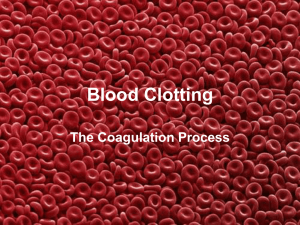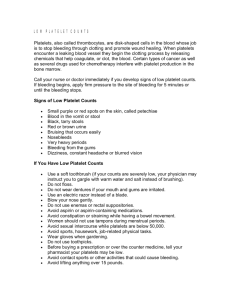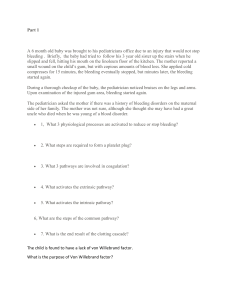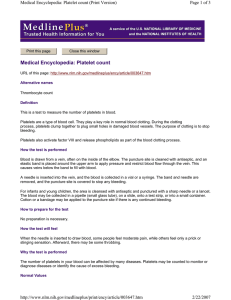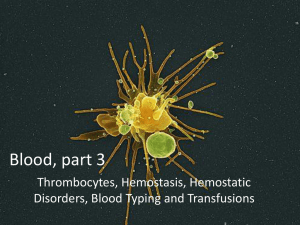Bleeding Time
advertisement
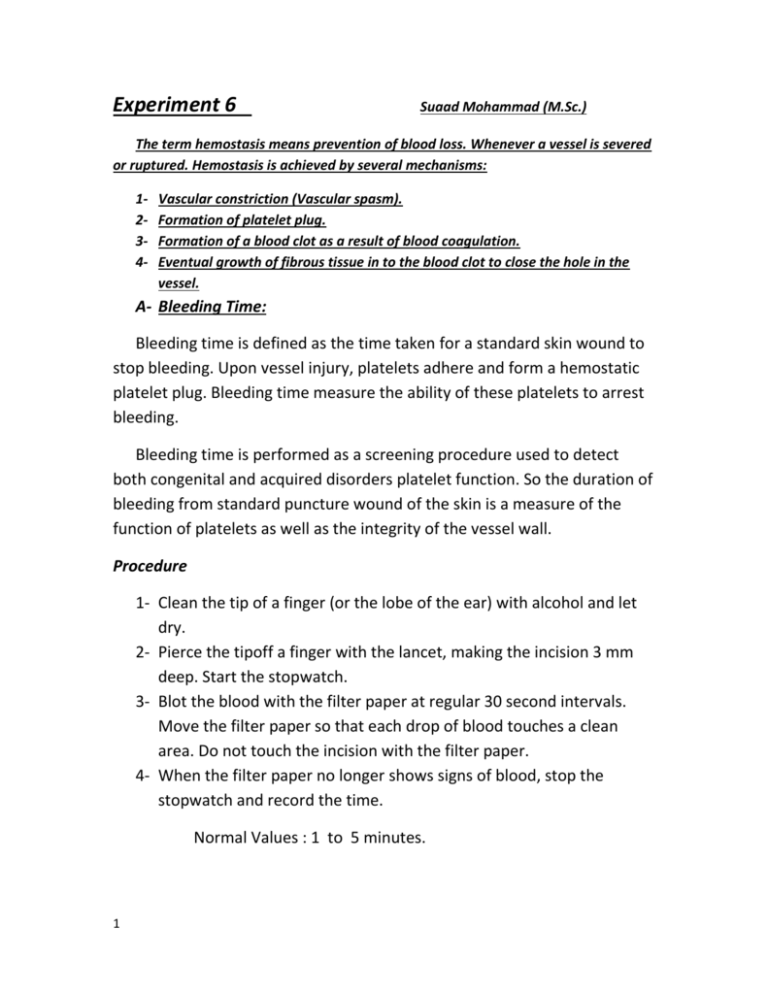
Experiment 6 Suaad Mohammad (M.Sc.) The term hemostasis means prevention of blood loss. Whenever a vessel is severed or ruptured. Hemostasis is achieved by several mechanisms: 1234- Vascular constriction (Vascular spasm). Formation of platelet plug. Formation of a blood clot as a result of blood coagulation. Eventual growth of fibrous tissue in to the blood clot to close the hole in the vessel. A- Bleeding Time: Bleeding time is defined as the time taken for a standard skin wound to stop bleeding. Upon vessel injury, platelets adhere and form a hemostatic platelet plug. Bleeding time measure the ability of these platelets to arrest bleeding. Bleeding time is performed as a screening procedure used to detect both congenital and acquired disorders platelet function. So the duration of bleeding from standard puncture wound of the skin is a measure of the function of platelets as well as the integrity of the vessel wall. Procedure 1- Clean the tip of a finger (or the lobe of the ear) with alcohol and let dry. 2- Pierce the tipoff a finger with the lancet, making the incision 3 mm deep. Start the stopwatch. 3- Blot the blood with the filter paper at regular 30 second intervals. Move the filter paper so that each drop of blood touches a clean area. Do not touch the incision with the filter paper. 4- When the filter paper no longer shows signs of blood, stop the stopwatch and record the time. Normal Values : 1 to 5 minutes. 1 B- Coagulation time (Capillary tube method) In order for blood to clot, the enzyme thrombin must be generated from the plasma precursor prothrombin. Thrombin then converts soluble fibrinogen into insoluble fibrin. Generation of thrombin involves the sequential activation of a number of other plasma clotting factor, this process is also being assisted by Ca++ and by factors released by platelets and damaged tissues . The time taken for blood to clot mainly reflects the time required for the generation of thrombin in this manner. If the plasma concentration of prothrombin or of some of the other factors is low (or if the factor is absent, or functionally inactive), clotting time will be prolonged. The expected range for clotting time is 4-10 mins. Procedure 1- Clean your finger with alcohol and let dry. 2- Pricked the finger by lancet, remove the first drop of blood. 3- Squeeze the finger to obtain a large drop of blood, and fill the capillary tube with blood. 4- After one minute start breaking small pieces of the capillary tube every 30 second until a fibrin thread is seen between the two broken ends. 5- By these methods the normal clotting time is 5 to 10 minutes at 37 C°. 2


